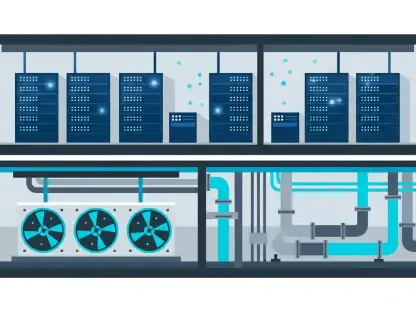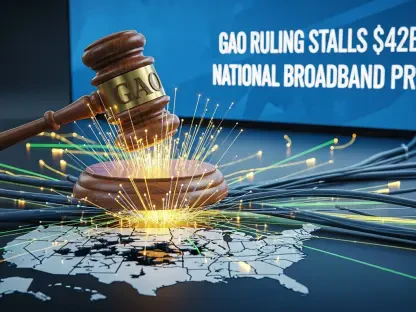In recent years, the telecommunications industry has been undergoing a dramatic transformation, driven by the need to manage increasingly complex 5G-Advanced networks. Huawei’s innovative multi-agent AI systems introduce a new frontier in network management, promising to enhance efficiency and operational flexibility. As telecom operators grapple with the challenges of maintaining robust network performance amidst growing demands, these multi-agent systems appear poised to offer a solution, revolutionizing how networks are managed globally.
Huawei’s Multi-Agent System Unpacked
Huawei’s initiative represents a groundbreaking foray into the realm of intelligent 5G-Advanced network management through its Intelligent Service Engine platform, also known as RISE. This advancement introduces specialized AI agents tailored for specific functions, replacing traditional single-agent models. By assigning distinct roles like fault repair and energy management to these agents, Huawei ensures each component is optimized to maximize the network’s overall effectiveness. This structure facilitates easy coordination and allows for advanced problem-solving capabilities.
Central to this system is the multi-model linkage, enabling seamless data exchange among AI agents. This linkage serves as the foundation for collective decision-making, with agents leveraging shared insights to make informed choices. The integration with digital twins—virtual replicas of actual networks—facilitates rigorous testing of decisions before their implementation, minimizing disruptions and enhancing network stability. Huawei’s strategy not only augments service delivery but also solidifies its leadership in pioneering intelligent network solutions.
Evolving Toward Autonomous Networks
The push for autonomous networks has become a prominent trend, with Huawei at the forefront through its multi-agent technology. Emphasizing low human intervention, the system ensures compatibility among network equipment from diverse providers. By employing a host-worker model, the central host agent delegates tasks to worker agents, maintaining coherence without direct manual control. Utilizing the AGlink secure communication protocol, Huawei guarantees data protection and continuity of service in high-demand scenarios, adapting resources for differentiated user needs.
Huawei’s active participation in global industry standardization efforts with organizations like 3GPP and TM Forum signifies its commitment to setting benchmarks for autonomous networks. The collaborative engagements reflect the shifting landscape of telecom, focusing on self-sustaining networks that can operate with minimal external input. These networks promise enhanced agility for providers, spurring innovations in service delivery and operational management.
Impacts and Future Directions
As telecom providers integrate Huawei’s multi-agent systems, the benefits extend across multiple applications. These systems have demonstrated potential in areas such as premium content streaming and enterprise-grade connectivity, offering targeted services that cater to varied user demands. By enabling seamless management of network resources, operators can streamline service deployment and scale swiftly to meet evolving consumer expectations.
Looking ahead, the implications of multi-agent AI systems suggest a trajectory toward complete network autonomy. The technology promises breakthroughs in operational efficiency, capacity management, and customized user experiences. While challenges related to integration and regulation remain, the momentum toward intelligent networking continues to build. Huawei’s leadership in this field positions the company to influence future technological directions, setting the stage for more resilient and adaptive networks.
Conclusion and Industry Implications
Huawei’s advancement in multi-agent AI systems marks a significant milestone in network management, offering an innovative approach to handling complex telecommunications demands. The specialized AI agents within these systems and their collective decision-making capabilities enable agile and dynamic network operations. Despite encountering integration and regulatory challenges, the transition toward self-managing networks is gaining traction. Huawei’s continued collaboration with industry groups indicates sustained efforts to standardize these technologies, anticipating an era of near-autonomous networks. As the industry evolves, the promise of innovative solutions becomes increasingly tangible, highlighting the transformative potential of multi-agent AI systems.









